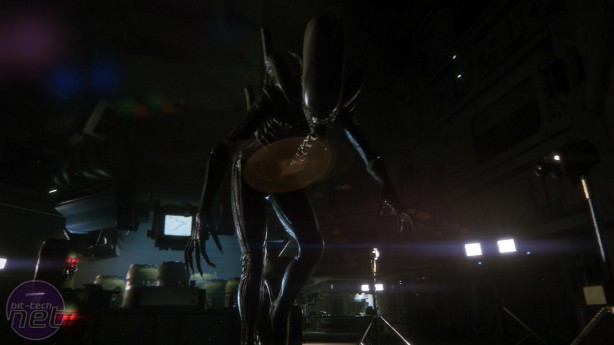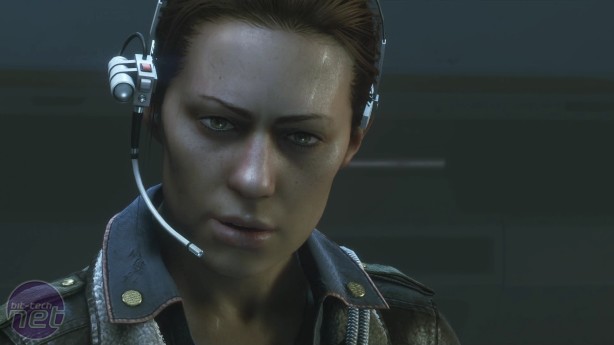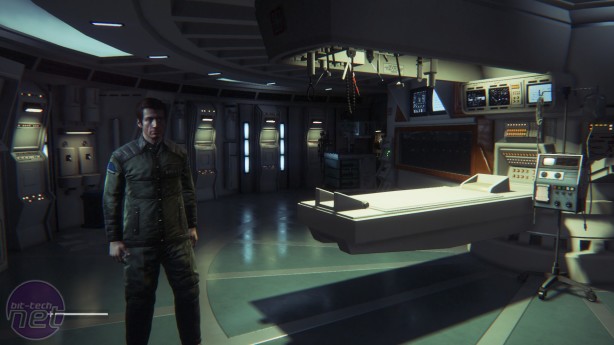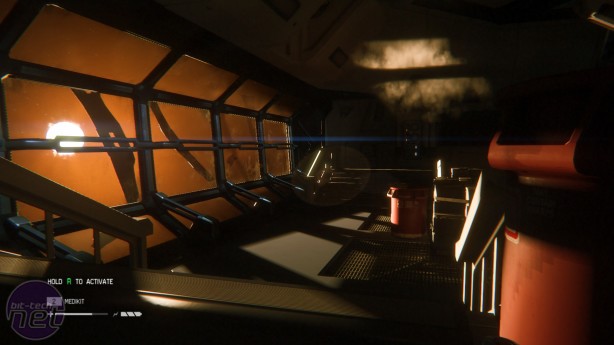
Alien: Isolation Review
Price: £29.99Developer: The Creative Assembly
Publisher: SEGA
Platform(s):, PC, Xbox One, PS4
Version Reviewed: PC
For the past couple of days I’ve been afflicted by a rash on my hands, a raw, biting, maddening itch that’s left me sleep-deprived and more than a little bit irritable. I’m not entirely sure what’s caused this. It could be an allergic reaction to something I touched over the weekend. It could be due to a particularly worrisome and frustrating work week. But it could also be a consequence of the stress generated by spending 23 hours with Alien: Isolation.
To be clear, I don’t think the latter is the most likely cause. Nevertheless, I wouldn’t put it past The Creative Assembly’s brilliant sci-fi horror game to result in a fair few players breaking out in hives. I’m not sure if it’s the most frightening game I’ve ever played, but it's certainly the most consistent in keeping the tension elevated to skin-crawling levels. It’s also easily the best Alien game in existence, and my current frontrunner for game of the year.
Unlike most Xenomorph-focussed games, Isolation takes its cues directly from Ridley Scott’s Alien rather than James Cameron’s Aliens. Part-spinoff, part-sequel to Scott’s classic film, Isolation places you in the spacesuit of Ellen Ripley’s daughter Amanda. Growing up motherless, the adult Amanda is informed that new evidence regarding her mother’s disappearance has come to light on the Space Station Sevastopol, and joins the crew of the spaceship Torrens en-route to the station. As you can no doubt guess, upon arrival Ripley discovers that far more than her mother's fate has been uncovered by the inhabitants of Sevastopol.
It’s a tale that fits with remarkable ease into the Alien universe, in no small part because The Creative Assembly are slavish to the source material almost to a fault, a point we’ll go into later. That said, Isolation does flesh out this universe in several new and interesting ways. Amanda Ripley quickly establishes herself as the ideal character to occupy the central role, sharing a similar balance of strength and vulnerability, that depth of courage and determination in the face of utmost terror that made her mother such a compelling protagonist in the films.
Isolation's other major contribution to the overarching fiction is Sevastopol itself, and the
company which owns it, Seegson Synthetics. An ailing competitor to Weyland Yutani, Seegson’s main product is the “Working Joe” android. Whereas Weyland-Yutani’s artificial persons are highly advanced, utterly lifelike robots, Seegson’s Working Joe’s are drone-like mannequins devoid of personalities, intended as servants and manual labourers for Sevastopol. Their white skin, bald heads and expressionless-faces occupy that precise point in the uncanny-valley which makes them creepier than a giant spider wearing a Jimmy Savile mask.
Seegson is the logical corporate competitor in a world that has been written and designed with almost fanatical attention-to-detail. Sevastopol station is the perfect meeting point of technical innovation and artistic style, bringing the retro-tech future of Scott’s film to life with truly astonishing lighting effects and beautiful texturing. Isolation merges scenes strongly reminiscent of the film, the dining and research areas of the Nostromo, the corridors lined with cream-coloured padding and lofty, chain-strewn spaces, with new locations inspired from everyday life. Sevastopol's spaceport is heavily inspired by modern airport terminals, including baggage reclamation conveyors and overpriced shopping areas.
Equally impressive is the sound design, coupling the eerie music and ambient effects of the film with creaking metal, whirring machinery and humming electrical appliances that make up much of Sevastopol’s own atmosphere. Much of this sound is dynamic, responding to Amanda’s interaction with the world. Writing her as an engineer gives the Creative Assembly the excuse for Amanda to be constantly touching and fiddling with the environment. When she isn’t clacking on the chunky keyboards of computer terminals which bleep and bloop with sounds coming directly to you from the late seventies, she’s charging electricity generators that roar to life with what soon comes to feel like deafening loudness, or pulling the levers of security doors, slicing through emergency panels with her ion torch, and rewiring systems such as camera feeds, lights and air purification units.
There’s sound reasoning behind this constant tactility and sterling effort to render a realistic environment. The Creative Assembly want you to feel personally connected to a world that is as real as modern engine tech can render, and this is down to one big, black, and exceptionally hostile reason.

MSI MPG Velox 100R Chassis Review
October 14 2021 | 15:04













Want to comment? Please log in.